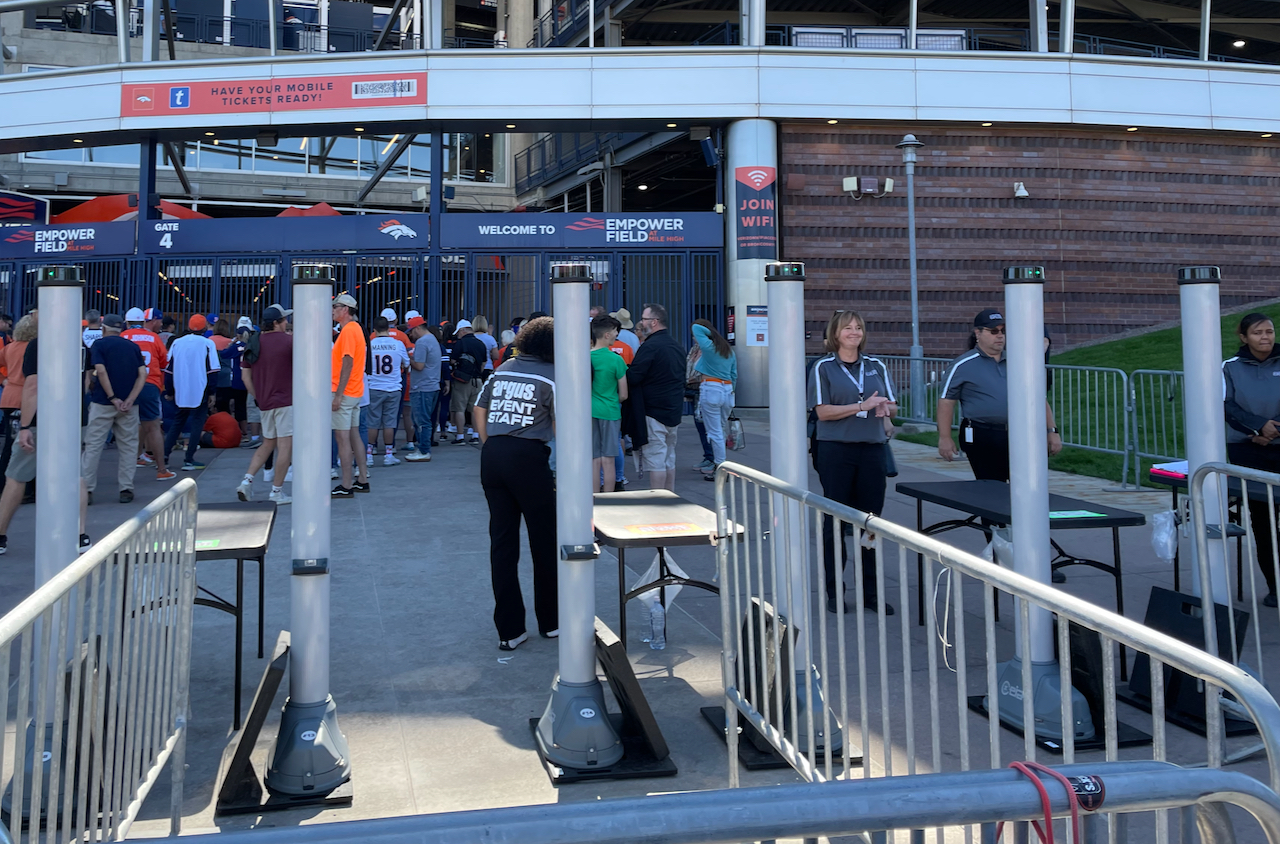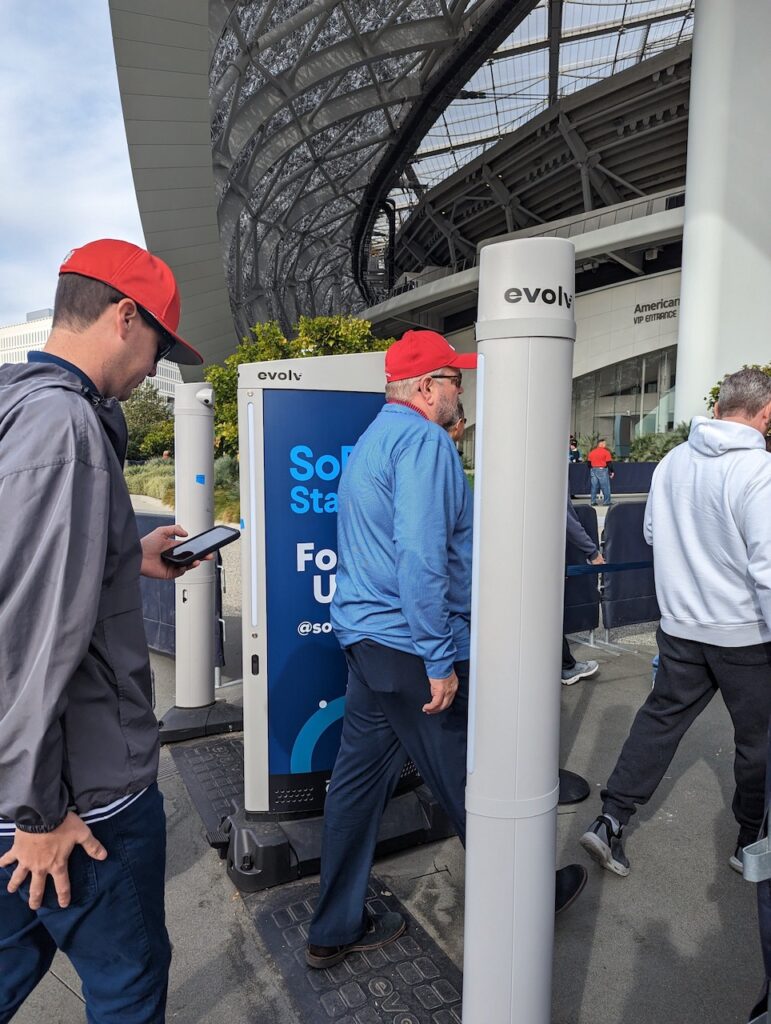
Part 1: Accelerating security screening
Long lines for security screening, once the bane of fans at just about every sports and entertainment venue, are rapidly disappearing of late thanks to new security screening technology that is gaining rapid acceptance among venue owners and operators.

The pandemic opened a new chapter in stadium operations. Common wisdom surrounding the fan experience was upended by the need to distance venue patrons to prevent the spread of disease, thereby opening the door for new approaches to venue entry, concessions, premium food service, merchandise sales, and sanitization.
An ‘if it ain’t broke don’t fix it’ mindset and attachment to service requiring personal interaction was replaced with the need to reframe operations to the realities of a reduced labor force and a healthy fear of human clustering. Building on Stadium Tech Report’s exploration of concessions automation, we’re kicking off a series focused on venue security that dives into efforts to eliminate crowding at stadium entries while preserving hard-won gains in stadium security that were responsive to 9/11, the Boston Marathon bombing, and other public tragedies that illustrated the vulnerabilities of having thousands of humans gathered.
As operators sought ways to reduce clustering at venue entries, weapons detection was an obvious issue. Conventional metal detection technology required that individuals pass through a pair of columns that contained an array of magnetic coils (a “box” scanner, “Magnatometer”, or “Mag”) that could detect the presence of metal on a body. Effective screening was focused on confirming that no metal was present (there was no threat) rather than the detection of a threat.

Achieving perfection for these systems required people passing through the box to unload their person until they could successfully pass through the box without setting off an alarm. The process required a screener to observe or process each person, single file. At the same time, it was impractical to scan bags, requiring venues to require visitors to abandon bags or migrate to clear plastic bags that could be easily visually scanned. The process was tedious and the time to scan an individual was complicated by the time taken to unload and reload personal effects.
To a few industry innovators, the solution to the process was obvious. Rather than focus on confirming that there was no threat – which accounted for the vast majority of fans – new systems would focus on finding potential threats and divert them from the stream of patrons for secondary screening. Several approaches were tested and the result was the emergence of “walk through” security scanning.
Unlike the narrow “box” profile of traditional metal detectors, the new systems from almost all the providers are built in more of a “gate” fashion with technology posts, panels or towers that fans walk in between as they are scanned. While most still require a single-file flow, one system already allows for multiple people to pass the scanners at a single time.
As people entering the venue were asked to walk past a column or between a series of columns or gates, a combination of detection technology, AI, and advancements in visualization could allow a single screener to quickly identify exceptions (potential security risks) and then direct those threats to a secondary screener, equipped with additional threat detection tools and/or training who could either confirm the negative (no threat) or contain the threat.

In order to keep the line of attendees moving, most of the new systems also employ a strategy of having staff intercept any fans who trigger positive alerts by diverting them off to the side into a secondary screening area a few steps past the initial scanning panels or posts, thereby keeping the people behind them from needing to stop.
The impact was immediate. With walk-through security scanning, the size and depth of stadium queues and security staffing requirements dropped precipitously.
Several variations of the walk-through approach are available from different vendors. There is ongoing debate as to which combination of technology is the most effective and if in fact these techniques are as effective as advertised. But based on the achieved benefits, these exception-based systems are quickly replacing the traditional Mag as the preferred mechanism for threat detection in public venues.
Leading the way are the most-visible professional and college stadiums bolstered by high marks for the technology and shorter lines in post-event surveys. In part 2 of this series, we will endeavor to explain at a high level how these systems work, to introduce some of the products available today, how these systems benefit venues and guests, what challenges are being addressed, finally offer thoughts on what’s coming in the future.
Part 2: Exception processing, and preventing tragedy







